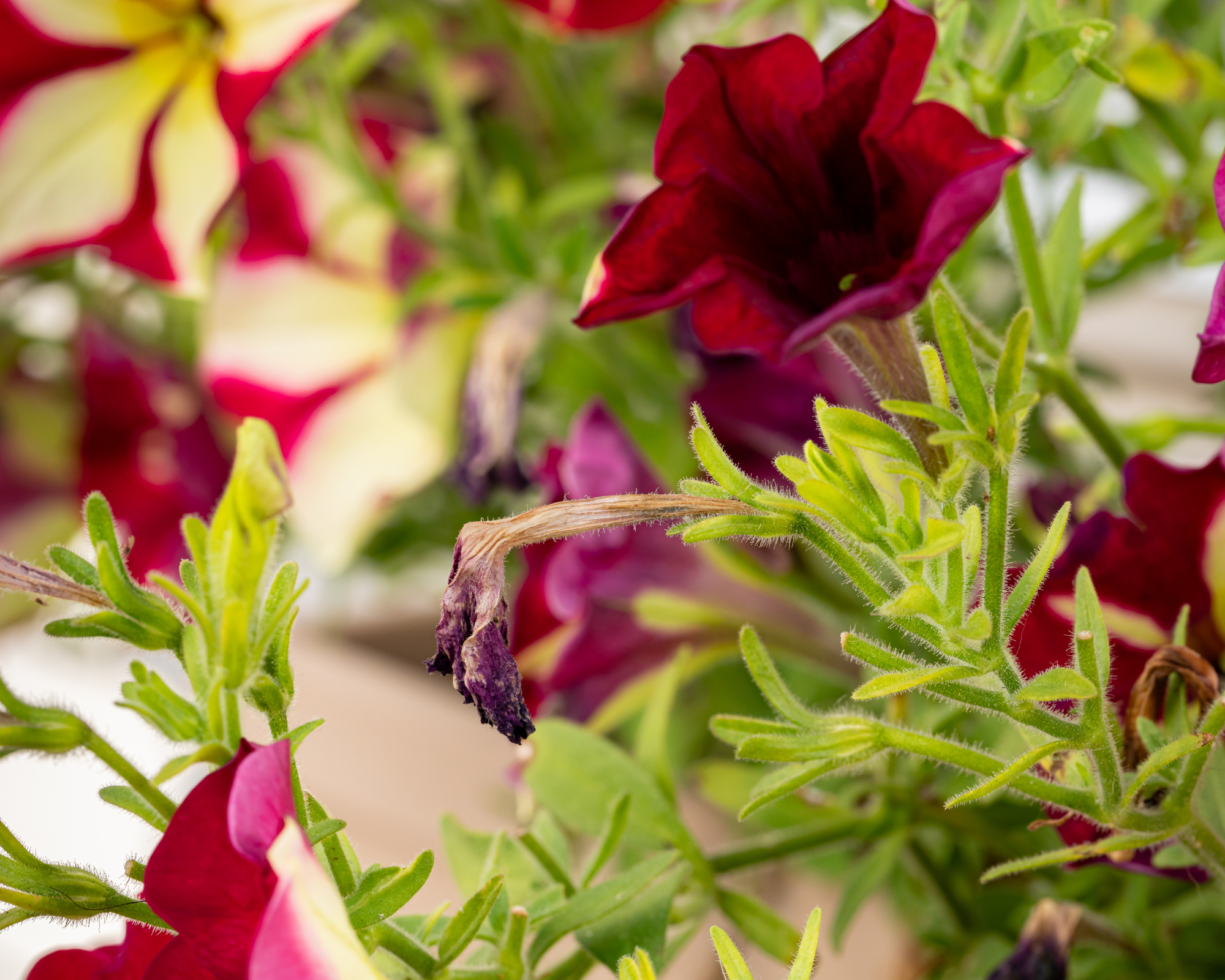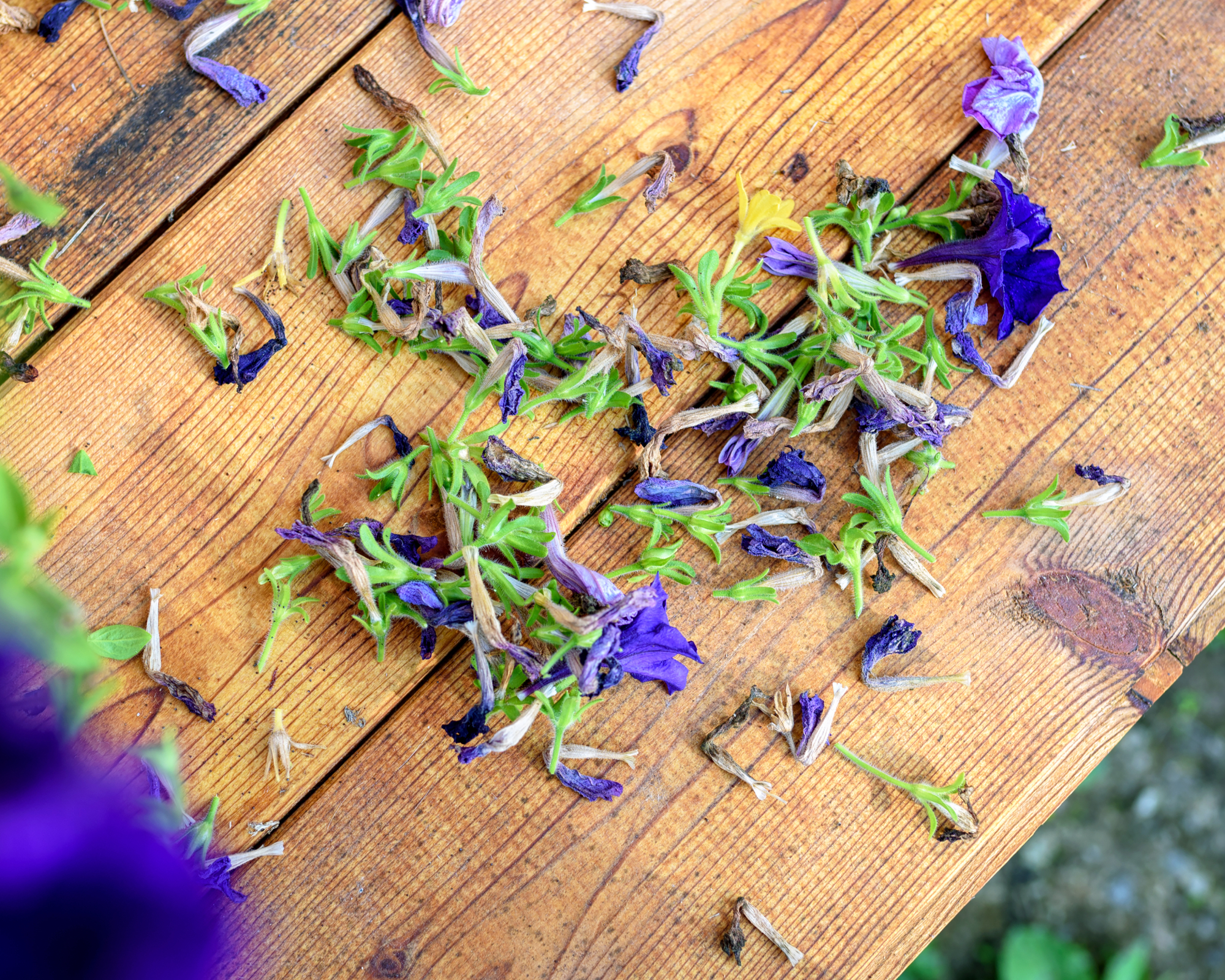How To Deadhead Petunias for Continuous Blooms All Summer and into the Fall
Petunias are a classic addition to any summer annual garden. Learn how to deadhead petunias to keep them looking fresh and vibrant all summer long.


Who doesn’t love petunias? They are endearing bedding flowers in bright colors and – with a little care – the blooms can last all summer long. I personally adore petunias and plant them in garden beds, hanging baskets, and containers too.
Like with all annuals, growing petunias adds gorgeous color to your garden for one season only. Their botanical job is to bloom, then set seeds that can produce flowers the following year.
Deadheading petunias after the blooms fade interrupts this process and, instead of growing seeds, the plants can bloom again, filling the garden with flowers all summer long.
Do You Need To Deadhead Petunias?

You don’t “need” to deadhead petunias. You won’t violate any laws by allowing the flowers to go to seed. But you’ll have to be okay with an increasing number of wilting blooms and empty stems in the middle of your flower bed.
But there are advantages to deadheading petunias. The top advantage is additional blossoms – in fact, if you deadhead your petunias regularly, you can have new flowers blooming all summer long. In addition, your petunias in hanging baskets or in garden beds will look lush and lovely as the new flowers come in.
Note that there are some types of petunias that are improved varieties, bred to continuously bloom. These varieties do not set seeds, so deadheading these varieties is not necessary. They will bloom and rebloom all season long which explains why they cost a bit more than seeded petunias (and may be worth it!)
When to Deadhead Petunias

You can grow petunias by planting seeds or by buying flats of flowers in the garden store. I must admit that I buy six-packs of starts because they begin blooming so quickly and light up the garden. They are quite cheap and every one of the starts thrives when transplanted.
Sign up for the Gardening Know How newsletter today and receive a free copy of our e-book "How to Grow Delicious Tomatoes".
But when I am planning on installing a lot of petunias, I’ll go with seeds. While plant starts won’t break the bank, seeds are even cheaper. They do take longer to bloom, since they have to germinate, produce stems and develop root systems before they flower.
But whether you buy plant starts or start your plants from seeds, they will eventually bloom. After they bloom, they will fade. Clearly, you don’t want to deadhead petunias until the flowers fade. The very purpose of deadheading petunias is to get rid of fading blossoms. So, the time to deadhead a petunia is when the flowers begin to wilt.
There is no specific day and time that the plants will bloom or fade. There are thousands of varieties of petunias, and they can start flowering at different times. The region, the climate and even the weather can impact the date that the plants start blooming. For deadheading petunias and pruning just about everything else in the garden, our gardening editors love the Felco F2 Classic Manual Hand Pruners, available from Amazon.
How to Deadhead Petunias

If only all garden tasks were as easy as deadheading petunias! How do you deadhead petunias? It’s a simple procedure. When you see a wilted flower, you simply remove the bloom, taking out the ovary - a small bud structure just behind the flower. That is where the plant produces seeds, so removing it is the act that stops seed production. You can clip the faded flower off with scissors, a pruner, or just using your fingers.
If you are wondering how to deadhead petunias in hanging baskets, you do it in the same manner. You clip off each faded bloom and the ovary beneath it.
Frequently Asked Questions
Where do you cut when deadheading petunias?
When you deadhead a petunia, you remove the faded flower and the ovary beneath it. Ideally, make the cut just above a pair of leaves on the stem.
Can I deadhead petunias with scissors?
You can deadhead petunias with scissors, garden scissors, or pruners. Or you can just use your fingers.

Teo Spengler is a master gardener and a docent at the San Francisco Botanical Garden, where she hosts public tours. She has studied horticulture and written about nature, trees, plants, and gardening for more than two decades, following a career as an attorney and legal writer. Her extended family includes some 30 houseplants and hundreds of outdoor plants, including 250 trees, which are her main passion. Spengler currently splits her life between San Francisco and the French Basque Country, though she was raised in Alaska, giving her experience of gardening in a range of climates.